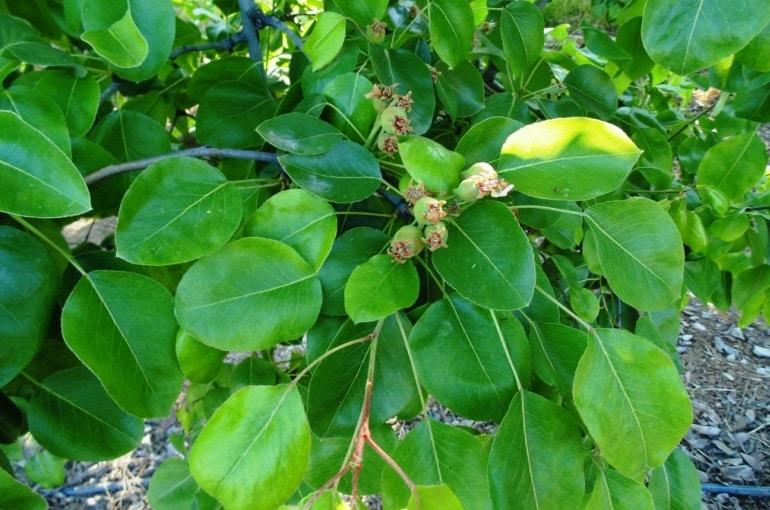Pear Tree Pests and Diseases

This post is also available in:
This post is also available in:
![]() Español (Spanish)
Español (Spanish) ![]() Français (French)
Français (French) ![]() Deutsch (German)
Deutsch (German) ![]() Nederlands (Dutch)
Nederlands (Dutch) ![]() العربية (Arabic)
العربية (Arabic) ![]() Türkçe (Turkish)
Türkçe (Turkish) ![]() 简体中文 (Chinese (Simplified))
简体中文 (Chinese (Simplified)) ![]() Italiano (Italian)
Italiano (Italian) ![]() Ελληνικά (Greek)
Ελληνικά (Greek) ![]() Português (Portuguese (Brazil))
Português (Portuguese (Brazil)) ![]() polski (Polish)
polski (Polish)
Just like apple (but to a lesser extent), pear is a delicious fruit that unfortunately does not attract only humans. Aphids, moths, beetles, leafhoppers and spider mites often attack the tree and the fruits in order to lay their eggs and be fed. The common denominator of these pests is that they lay their eggs in various parts of the tree or the fruit and they often cause spots or holes to the fruit, fruit drop and damage to the leaves, from curling and yellowing to defoliation.
A major fungal disease that causes severe economic damage to commercial pear and apple growers is Powdery Mildew. The pathogen (Podosphaera leucotricha) attacks flowers, leaves and fruits, causing fruit distortion and discoloration, while the quantity of the fruits decreases. Moreover, the infected tree becomes weak and is more vulnerable to other attacks. Read more on Powdery Mildew
Fire Blight is a bacterial disease caused by Erwinia amylovora. It can be widely spread in pear and apple orchards with wet and warm climate. As its name reveals, fire blight finally makes the shoots and branches look like they are burned. It mainly affects young shoots and can be faced by pruning only when the tree is dormancy. Pruning during active growth will most likely spread the disease (ask a certified agronomist). Read more on Fire Blight
Crown rot, collar rot and root rot are also common pear tree diseases.
2.) How to grow a Pear Tree from seed
3.) Growing Pear Trees in pots
4.) Growing Pear Trees commercially
5.) Pear Tree Climate Conditions
6.) Pear Tree Soil Requirements and Preparation
7.) Pear Tree Propagation and Pollination
9.) Pear Tree Water Requirements
10.) Pear Tree Fertilizer Requirements
12.) Pear Tree Harvest & Yields
13.) Pear Tree Pests & Diseases
Do you have experience in Pear Tree cultivation? Please share your experience, methods and practices in the comments below. All the content you add will be soon reviewed by our agronomists. Once approved, it will be added to Wikifarmer.com and it will influence positively thousands of new and experienced farmers across the world.









































































